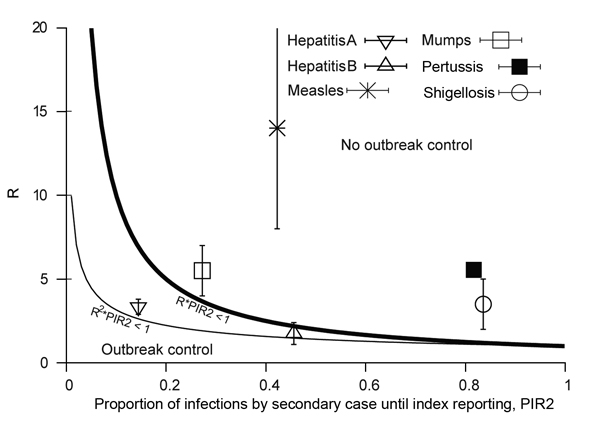Volume 21, Number 2—February 2015
Research
Quantifying Reporting Timeliness to Improve Outbreak Control
Figure 5

Figure 5. Timeliness of current reporting speed in the Netherlands, evaluated considering interventions applied for reported index cases and their secondary cases. The lower outbreak control condition is R2 × PIR2<1, assuming index cases are reported too late to stop any secondary infection (i.e., PIR1 = 1 always). The upper outbreak control condition R × PIR2<1, which is the most relaxed condition, assumes an extreme situation that index cases have not caused more infections than secondary cases (PIR1 = PIR2). In practice, the outbreak control condition lies in between these 2 conditions. Diseases that lie in the outbreak control areas are those for which reporting speed is timely enough to enable outbreak control. PIR1, expected proportion of cases caused by index case at notification; PIR2, expected proportion of new infections caused by secondary cases before index case is notified; R, reproduction number.